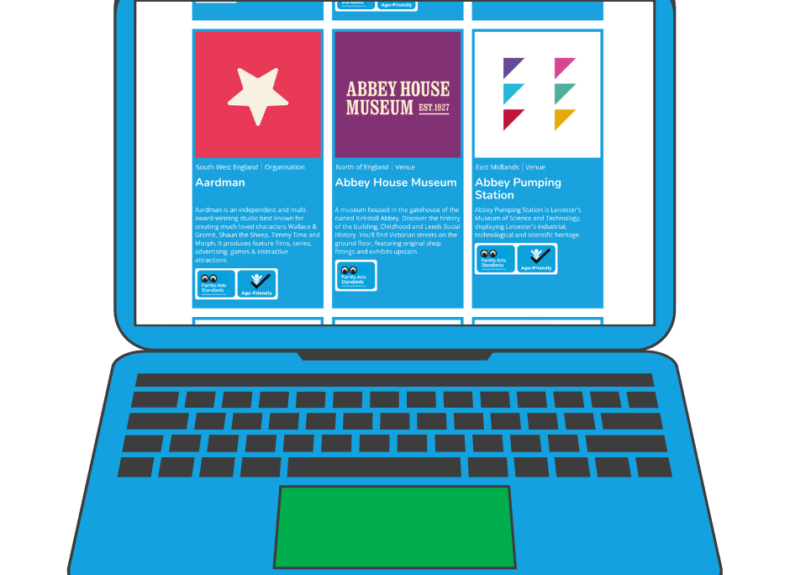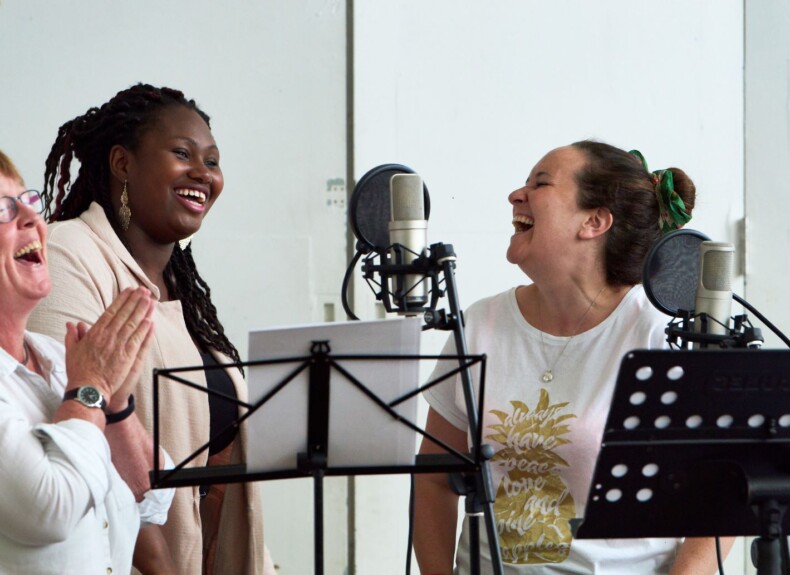Fantastic for Families Award 2022 Case Study
Age Exchange:
Caring with Creativity
David Savill from Age Exchange tells us more about the background and impact of their ‘Caring Together’ programme, winner of a Best Age-Friendly Outreach Award in the Fantastic for Families Awards 2022.
With three moving case studies, David shares insights into the impact of ‘Caring Together’ for those who are cared-for and their carers.
Introduction to the Caring Together Service – David Savill
For many years we have sought to develop person-centred creative care practice that enables people living with dementia and their family carer to enjoy being part of a company of their peers, and valued members of the Age Exchange community. Our trained Reminiscence Arts Practitioners that facilitate our groups and day care for people living with dementia have rich experience in using their arts practice, combined with the therapeutic use of reminiscence, to ensure that everyone they work with feels seen, listened to and empowered in the creative care they experience.
We begin by learning and sharing our lived experience with each other, our family story, and start from there. This ensures that identity and personhood are at the heart of our practice.
Our participants, carers and those who are cared-for tell us that they love coming to Age Exchange “to learn”, not to be pitied and talked at but to be given opportunities to develop new skills in art, music, dance, to be able to try new things and make new friends.
Mischief and humour are always encouraged – as is time when we focus on creating art together or singing as a choir. The arts are not some fluffy thing we do for a day a week but a necessary way of helping people communicate with each other, often when conventional narrative communication is lost.
Our Reminiscence Arts Practitioners who work with us share one skill necessary to our way of working, the ability to improvise, to be led by the people they work to support. When our Caring Services are at their best is when observers cannot tell who is running the group, because it’s one big company where everyone has a voice and everyone has the opportunity to lead.
As with all our services and projects, and in running our centre, we are blessed by the support of 86 volunteers aged 17-99.
Here we are sharing three case studies, bringing to life some of the work that we do at Age Exchange.
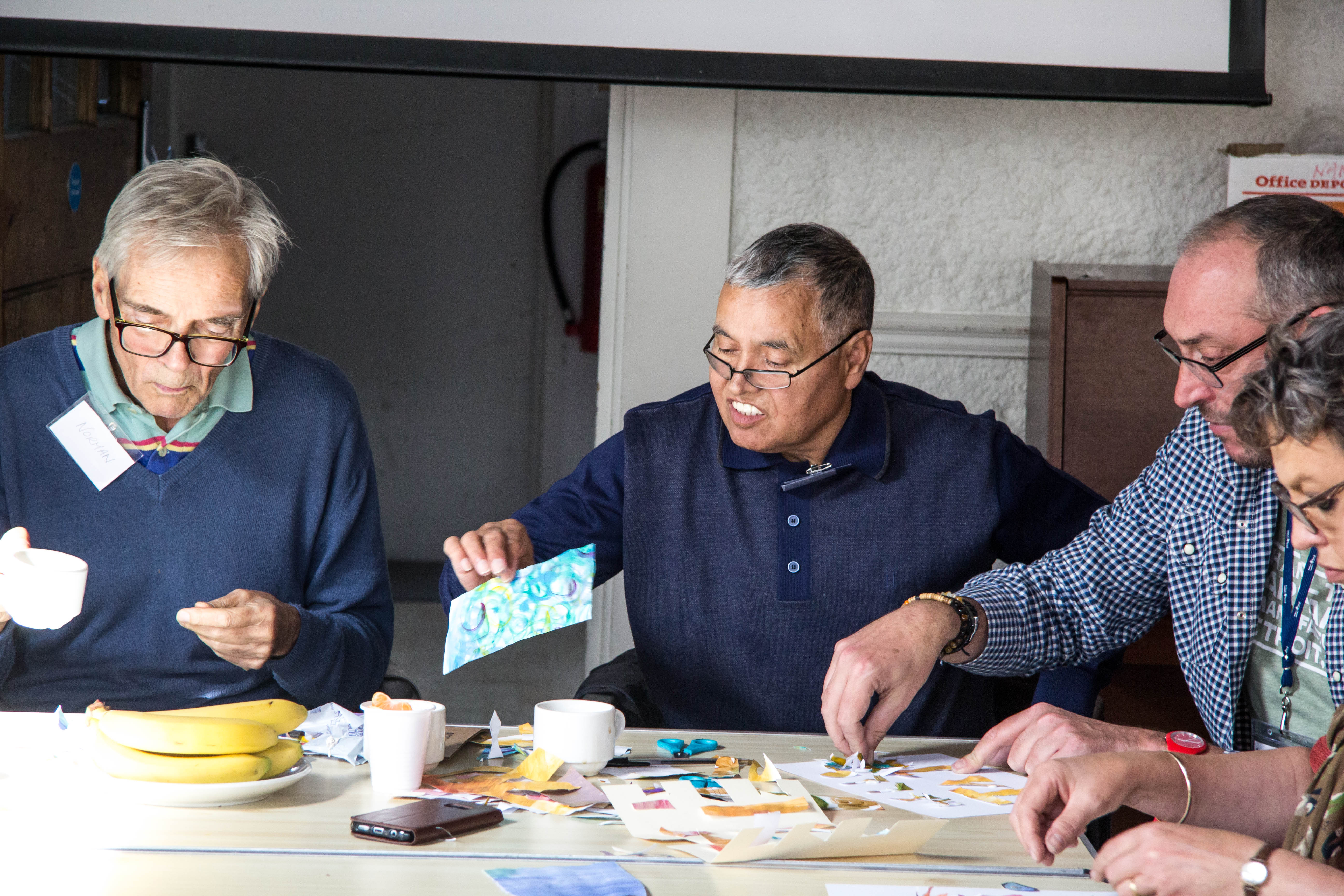
Tony & Gillian – A Case Study by Reminiscence Arts Practitioner Mel Jones
Tony and Gillian were two of the first members of the Age Exchange Day Care session at the Bakehouse. Gillian is 78 and has mid-stage dementia, she recognises people and can engage with conversation and activities but cannot operate independently. Tony, her husband, also in his seventies, is her main carer.
Early in the sessions, it became apparent that Gillian was drawn to the piano in the room. Fairly quickly she enquired if she could play it. She was encouraged to do so but Tony’s reaction was dismissive, “She does this, she’ll go on for hours. Just tell her when you want her to stop”. Gillian played. She does not read music but has a natural ability for improvisation, her playing was beautiful and the harmonic progressions quite complex.
The next week I invited Gillian to play again, expecting the same motifs. But the piece, whilst maintaining her style, was quite different. This time she received enthusiastic applause to which she said, “Was it alright?” Tony was becoming quite intrigued.
“Despite everything they have to deal with…the Age Exchange Daycare experience has added a new positive dimension to their relationship.”
On the third occasion, I recorded Gillian’s improvisation and we made it into a CD, which we called “Rhapsody on Returning to Friends” and presented this on her birthday. Gillian had obviously never been recorded before and she was quite startled to hear herself. She didn’t recognise her playing immediately.
At this point Tony’s attitude started to transform. This was no longer Gillian’s slightly irritating habit but something other people wanted to listen to and two musicians (Catherine and myself) along with everyone else were telling him it was good. He started asking why it was good and I tried to explain the modulations and also the mental processes required to negotiate key changes.
Gillian is very modest about her playing and always seeks reassurance that it is “alright”. Over the weeks, the variety of her pieces was impressive, whilst maintaining her distinctive style. I asked her how she approached playing and she told me she played by shapes. Watching her, I can see she finds chords she likes and then improvises within and around the chord shapes then changes to a new chord/key.
I then received an email from Tony with a recording he had made of her playing at a friend’s house. That was the turning point. He had genuine pride in his wife again. She could do something that other people, musically knowledgeable people, rated.
Despite everything else they have to deal with as a couple, the Age Exchange Daycare experience has added a new positive dimension to their relationship.
Tony too has found his musically creative side in lyric writing – but that is another story!
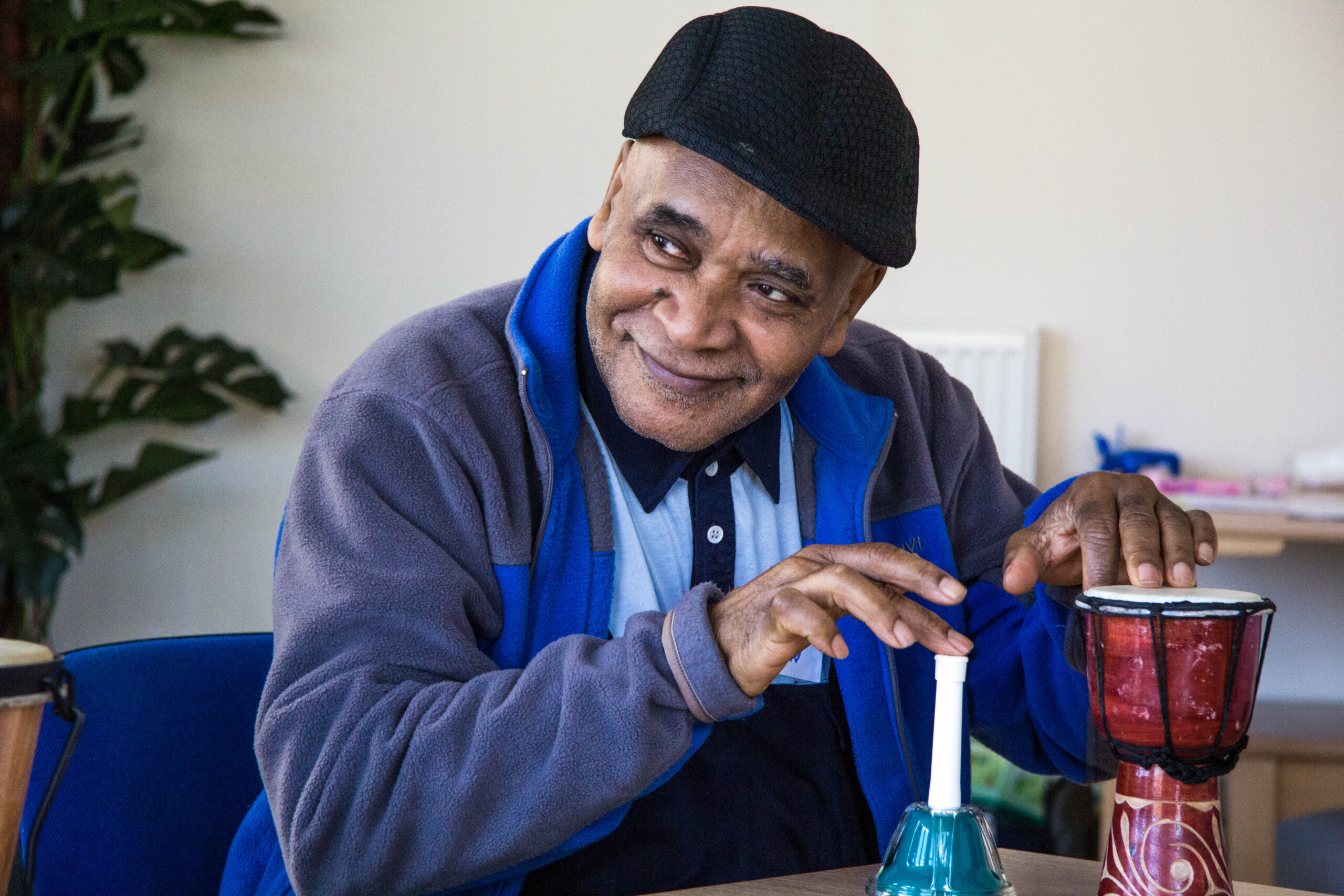
1:1 Creative support intervention at home
Letter from a sister regarding her brother receiving support. He has Dementia, Down’s Syndrome and Epilepsy
(names have been changed)
‘I have been struggling to get down on paper about what having the music therapy with Zoe had done for David (my brother) and myself. I still can’t do it adequately or thank you enough.
I don’t know what your goals or expectations are for the therapy you provide but the results have been far beyond what I could hope for or imagine.
It’s brought things out in David that I thought were lost and I feel that I’ve got part of my brother back. It is especially wonderful to hear his voice and see facial expressions return that communicate every bit as well as words.
It’s also brought back eye contact, smiles and laughter and arm and hand movements (he attempted to wave goodbye to Zoe on Monday). He said ‘hello’ to me a couple of times and read the word ‘six’ on the TV.
The benefits are not just for David but for me also, as I see David come alive, and for our Dad…who delights to hear about the sessions.
Many thanks from all the family.’
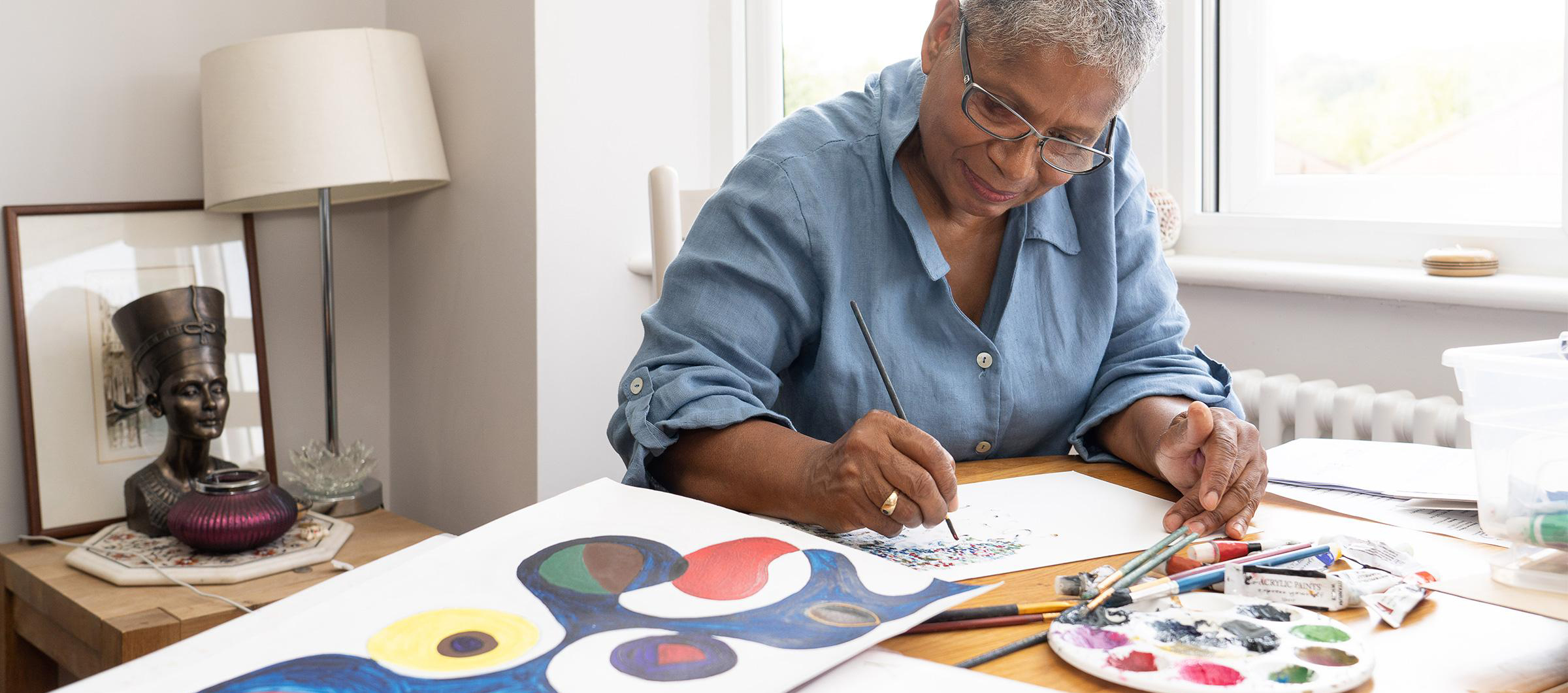
Celine and Brian – 1:1 Home support
Celine and her husband come from Jamaica and have lived in the UK since the 1950s, raising a family and working. Celine used to look after children and Lawrence used to be a medical courier. Since Celine’s Alzheimer’s diagnosis a few years ago, the couple have been experiencing many challenges, Celine’s everyday skills and her verbal communication have been affected greatly. Celine at times experiences anxiety and distress, reliving traumatic moments in her past. However, music, dance, faith and fabrics bring Celine a lot of comfort, as discovered by the practitioners who established a relationship with the couple at the Reminiscence Arts and Day Care Centre.
Celine and her husband Brian were the first couple to join our Reminiscence Arts in Day Care project at Conrad Court in November 2016. They were referred to us by Alzheimer’s Society Southwark with the aim of ‘supporting carer and person with dementia to find meaningful creative activities in the group and at home…’ The recommendation noted that, ‘Brian could benefit from support and gain confidence from…one to one carer support’.
“We sang and moved and created rhythms; we connected on a non-verbal level, through voice and sound and body.”
The couple became very much-loved participants of Conrad Court Day Care and the person- and relationship-centred approach used by the practitioners brought a lot of joy, but also special moments of sharing Brian’s concerns and difficulties of providing support to his wife. It became apparent that more support was needed at home for both and we suggested the 1-1 support. The artist who offered the home visits is a very experienced dance and movement practitioner using the multisensory activities:
‘The focus of the session was to engage Celine in meaningful activities, to connect with her and through our engagement to allow her husband Brian some time to rest.
Celine was chatty and cheerful, she told me many stories. We also danced together, listened to gospel music and used percussion instruments to create rhythm and sounds. Some sensory stimulation through touch (hand massage) and smell (mints, aromatherapy oils) was also offered to Celine.
Celine responded well to our session. She smiled, she kissed my hand many times, she sang and she danced with me. She sat very close to me and was very warm and tactile.‘
‘Celine and I sat down together and had a chat. Although her clarity of speech is lost, I am gradually making more sense of what she is communicating. Very often they are memories and feelings; she often mentions the name “Mary” and I have come to realise that it is her mother’s name. Sometimes, she is curious about me; wants to know where I live and if my parents are still alive.
Today, I took a few props out of my bag. Most of them were fabrics, of different textures and colours. Celine looked at them, then took them one by one and very carefully and with focus started wrapping one textile onto the other, until a large body of fabrics was created, resembling somehow a small human form. Then she held this made object into her hands and caressed it; it felt as if she was holding a baby and it was a very powerful moment.
After this creative expression, Celine held a tambourine. We sang and moved and created rhythms; we connected on a non-verbal level, through voice and sound and body. We enjoyed that interaction and had a laugh about. Celine held my hand, squeezed it, hugged me and kissed me. We were running over time and it was time to end, but it felt difficult for Celine to let go and I struggled to say goodbye and leave. I look forward to seeing her again next week. ‘
These home visits continue and support the couple’s relationship, the relationship with the practitioner and wider circle of friends at Conrad Court Centre. Celine’s level of anxiety seemed to have settled and the interactions allow exploring experiences in the comfort of the couple’s home. We also hope that the 1-1 support reassures Celine and Brian and encourages them to continue attending the Day Care Centre as well.
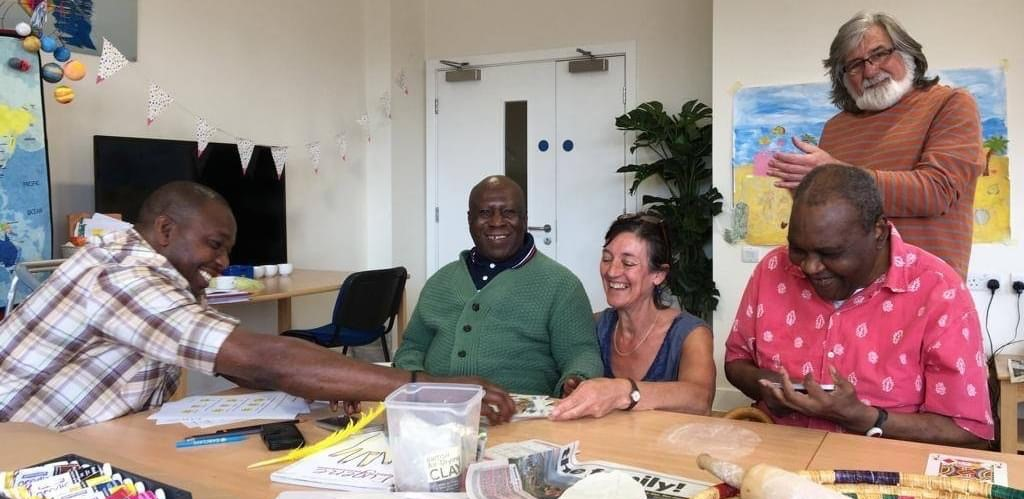
25 November 2022
USEFUL LINKS

David Savill, Artistic Director, Age Exchange
David has almost 20 years’ experience of creating and directing reminiscence arts programmes that enable individuals, and communities to share life experience through visual and performance arts.



